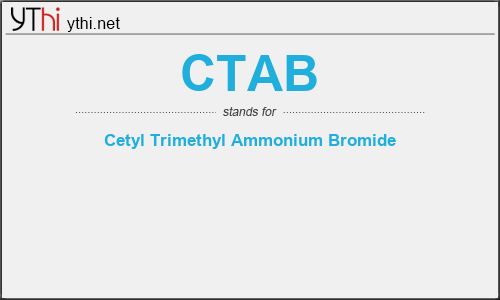What does CTAB mean? What is the full form of CTAB?
The Full Form of CTAB is Cetyl Trimethyl Ammonium Bromide.
It is one of the components of the topical antiseptic cetrimide. The cetrimonium (hexadecyltrimethylammonium) cation is an effective antiseptic agent against bacteria and fungi. It is also one of the main components of some buffers for the extraction of DNA. It has been widely used in synthesis of gold nanoparticles (e.g., spheres, rods, bipyramids), mesoporous silica nanoparticles (e.g., MCM-41), and hair conditioning products. The closely related compounds cetrimonium chloride and cetrimonium stearate are also used as topical antiseptics and may be found in many household products such as shampoos and cosmetics. CTAB, due to its relatively high cost, is typically only used in select cosmetics.
As with most surfactants, CTAB forms micelles in aqueous solutions. At 303 K (30 °C) it forms micelles with aggregation number 75-120 (depending on method of determination; average ~95) and degree of ionization, α = 0.2–0.1 (fractional charge; from low to high concentration). The binding constant (K°) of Br− counterion to a CTA+ micelle at 303 K (30 °C) is ca. 400 M-1. This value is calculated from Br− and CTA+ ion selective electrode measurements and conductometry data by using literature data for micelle size (r = ~3 nm), extrapolated to the critical micelle concentration of 1 mM. However, K° varies with total surfactant concentration so it is extrapolated to the point at which micelle concentration is zero
CTAB
means
Cetyl Trimethyl Ammonium Bromide![]()
Translate Cetyl Trimethyl Ammonium Bromide to other language.


Leave a Reply
You must be logged in to post a comment.